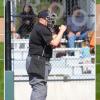RLI
Umpire-Empire locks topics which have not been active in the last year. The thread you are viewing hasn't been active in 2440 days so you will not be able to post. We do recommend you starting a new topic to find out what's new in the world of umpiring.
-
Similar Content
-
ejection High School 2 Man Crew. Plate umpire appealed to me for a check swing call when I was in C. Ever happened to you? 1 2
By Mr_Blue,
- 28 replies
- 5,016 views
-
- 12 replies
- 2,107 views
-
- 4 replies
- 1,484 views
-
- 2 replies
- 1,282 views
-
- 21 replies
- 3,426 views
-





Recommended Posts